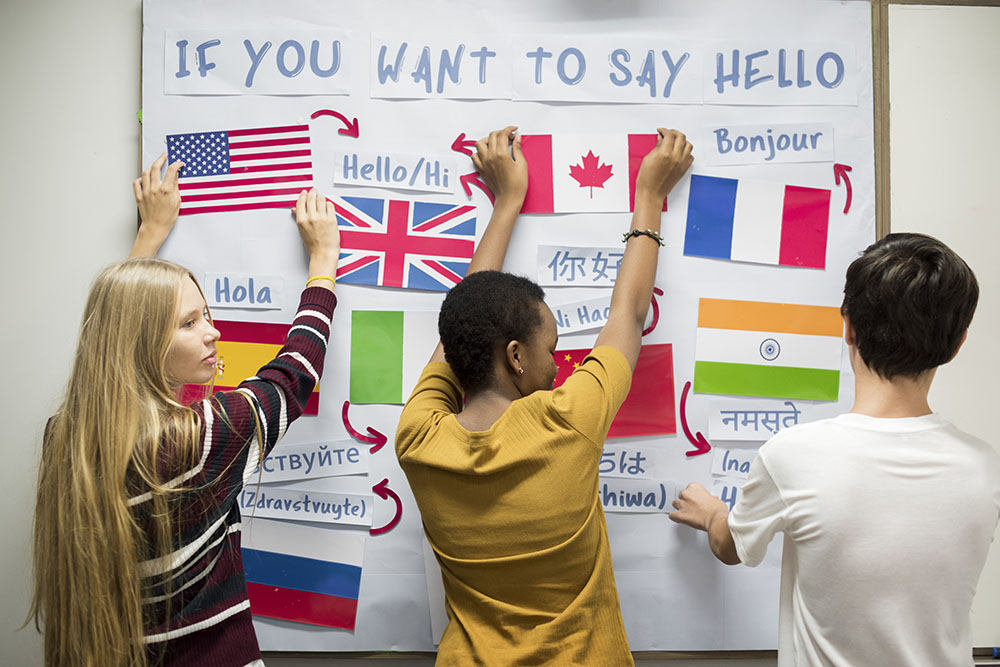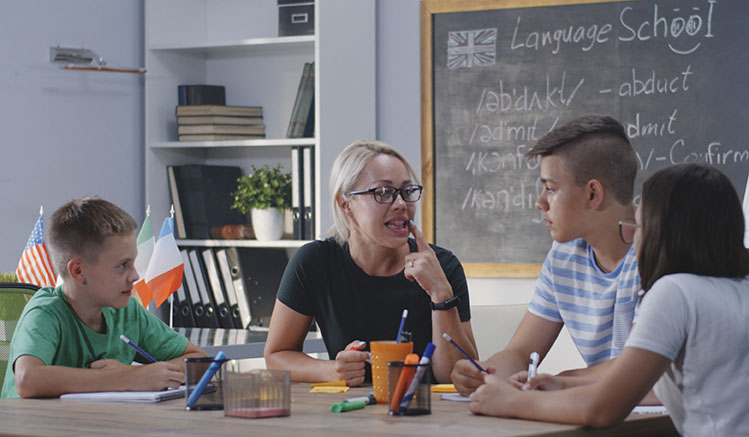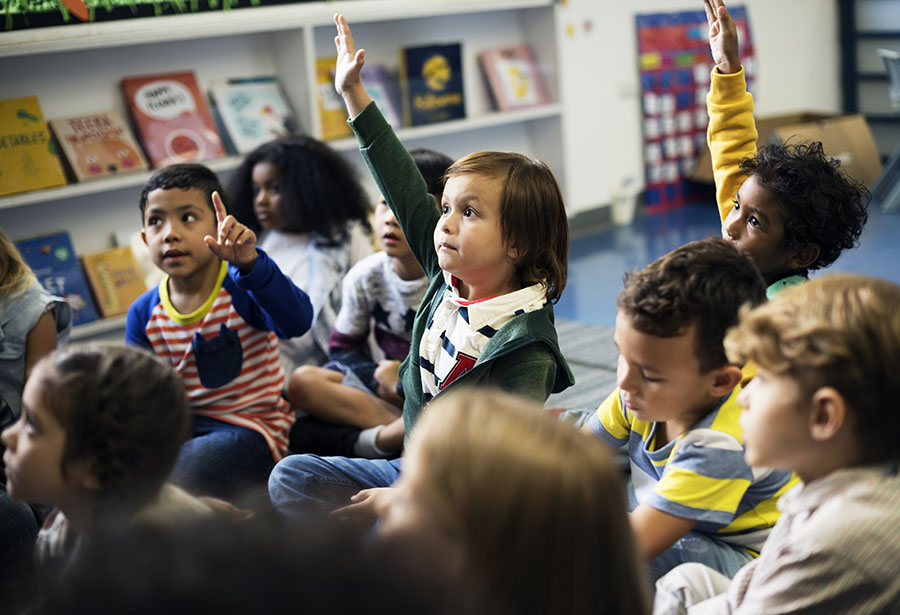Adapt-a-Strategy
Adjusting lessons for ENL/ESL students

Overview

As educators, we recognize that all students learn best in a variety of ways, and no two are exactly alike. Providing various strategies and utilizing engaging techniques helps to reach a wide array of learners across all subject areas. This can prove to be challenging, yet rewarding. We recognize that students have unique needs and learning goals, and that all students should have an equal opportunity to succeed. Providing flexibility in the way that students access and engage with materials is key.
This holds true especially for those learners who might be classified as ENL, learners that are focusing on English as a new language. This can be broken down further to describe additional student needs. English Language Learners, or ELL students, describes students who might be learning English as a second, third, or even fourth language, and ESL refers specifically to students working towards proficiency with English as their second language, often following their own native language. A crucial part of working with ENL students is remaining cognizant of their unique and culturally-rich backgrounds and needs.
It is important to be fully open-minded while instructing and working alongside ENL students. We have gathered information and strategies designed to help you work with the ENL population in your classroom. Not only will these students learn a lot from you as you work with them, but it is almost guaranteed that you will learn a great deal from them as well.
Pedagogy and Frameworks

Universal Design for Learning (UDL) — Thinking about teaching and learning in a way that offers all students an equal opportunity to gain knowledge and succeed is the basis of the UDL framework. This framework includes three key principles: engagement, representation, and action and expression. Its goal is to remove barriers to learning by utilizing a wide variety of teaching tools, strategies, and resources. UDL focuses on flexibility that can be adjusted readily to meet an individual's strengths and specific needs. Utilizing UDL in your classroom can reduce the need for specific accommodations and saves time by being proactive by providing supports across the board for a diverse population of learners.
Culturally Relevant Pedagogy (CRP) and Culturally Sustaining Pedagogy (CSP) — CRP focuses on multiple facets of student success and encourages students to maintain their cultural identities. CSP uses native culture and language to impact a native learner's achievements in a positive way. CRP accepts student backgrounds, while CSP views schools as places to encourage a student's native culture. It allows students to thrive and show pride for their unique backgrounds while becoming a part of a positive classroom and school culture.
Triple E Framework — University of Michigan Professor Liz Kolb developed the Triple E framework as a way to meet the desires of educators who were looking for a way to focus on learning goals and then incorporate technology as needed and where appropriate. The framework focuses on learning first and technology second, and the principle that effective technology integration happens with positive instructional strategies. Utilizing this framework helps to ensure that students are purposeful in the way they use technology so it effectively helps one to reach his or her goals. This framework applies to all subject areas.
Social Justice Standards — This framework provides guidance to ensure anti-bias education for grade Kindergarten through twelve. Consisting of four domains, identity, diversity, justice, and action, the standards promote knowledge and skills related to reducing prejudice and collective action. These are based on the four anti-bias education goals for early childhood education created by Louise Derman-Sparks. It is important to note that we each have our own biases, and being aware of those is highly beneficial. You can learn more by taking an implicit bias test such as Project Implicit, hosted by Harvard University.
Where to Begin

It is important to get to know your ENL students first, including their cultural and religious traditions, prior experiences, personalities, interests, hobbies, and families. This will help you to more fully meet each learner's needs and address challenges that might arise. Look for opportunities to continuously learn more about your students.
While "ice breaker" type activities might be effective and worthwhile for some, reach further and utilize techniques that will make your ENL students to feel more comfortable and willing to share with you and the other learners in the classroom. Be mindful of tuning in to what each student shares with you. Ask questions that let each individual know you are interested in learning more about his or her background, interests, and goals. Building trust may take time, but by being observant and cognizant of unique needs, you can help to ensure that each one feels comfortable learning in your classroom, whether it is in a physical or virtual setting, each and every day.
Backgrounds, Needs, and Goals

A critical goal while working with all learners is to make a point to honor each student's culture heritage equally by teaching students in ways that allow them to sustain what is important about their culture. One way to do this is to take a close look at a student's community and support what makes up that particular culture. Consider utilizing literature for different nationalities that share a common theme. This will allow students to feel supported and will help them to be fully engaged. This might require going outside of the curriculum and it may require some additional time to gather appropriate and effective resources. However, this can be applied to all subjects and offers culturally relevant pedagogy and also lends itself to culturally sustaining pedagogy.
Case studies have revealed that it is not out of the ordinary for a broad spread of nationalities and ethnicities to exist within one classroom. This might consist of mostly English-speaking learners combined with a few non-native English speakers. Some students might have little to no English exposure and poor literacy within their own native language as well. Other learners might be multilingual, but speak no English at all, and many come from home environments with parents or caretakers who do not speak any English. Still, other learners might not be fluent in English, but have parents who are, and this can also prove to be challenging for educators.
Allowing students to be advocates for themselves and engaging in strong cultural understanding while remaining open-minded to all perspectives is critical. Providing opportunities for collaboration can be key too. Students that come from other cultures and backgrounds can easily feel left out. Utilizing peers to work alongside them can be a strong strategy, and meeting parents where they are within their own culture is also important. One should not make assumptions about what is occurring at home, but rather should be open-minded and willing to learn and grow alongside the student and his or her family.
The ages of your students and their learning environments are also important to consider. Various strategies will make sense for some elementary learners but may not work for those in a secondary level program. For example, elementary students might benefit from being grouped with other students that have similar needs. This will help to provide them with additional support. High school learners may benefit instead from being matched up with a teacher that they can check in with routinely. This support person can help to make sure they are on track with their goals and help with organization and time management skills, or other needs that the student might have.
Continue to StrategiesBack to Top
